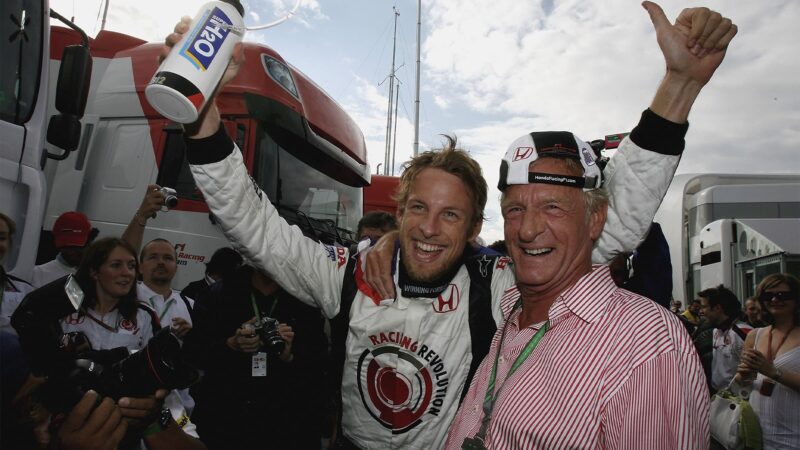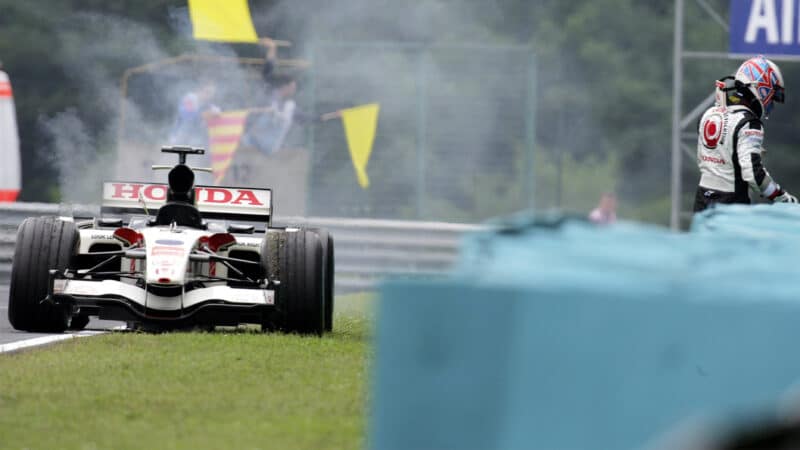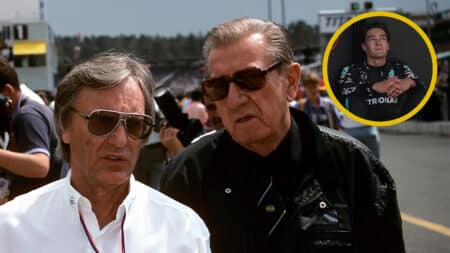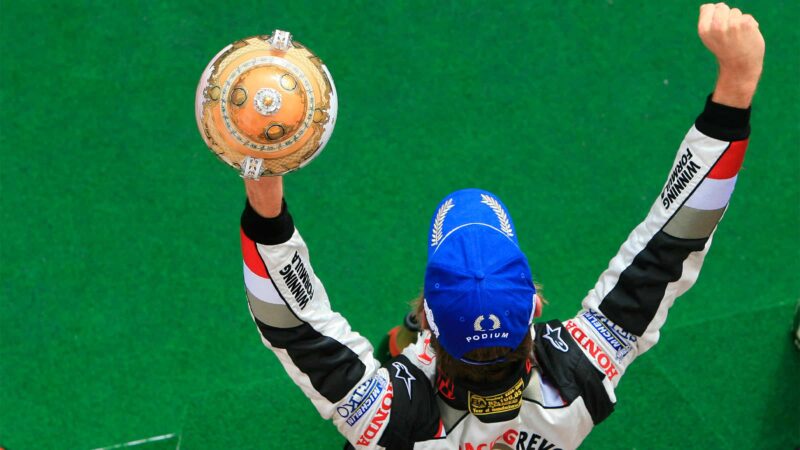McLaren drivers Räikkönen and Pedro de la Rosa initially ran first and second, but ceded the lead to Alonso after making tyre stops (laps 17 and 16 respectively). The field was soon quite distantly spread, with Alonso leading from Räikkönen, de la Rosa, the quietly impressive Button, Rubens Barrichello (Honda), David Coulthard (Red Bull), Nick Heidfeld (BMW) and Schumacher (now lapped, after an unscheduled stop to replace the front wing he’d damaged against Giancarlo Fisichella’s Renault). On lap 27, however, everything bunched up again following the race’s neutralisation. Toro Rosso driver Tonio Liuzzi had eased up to allow quicker cars through… and the dozing Räikkönen piled into him, scattering debris far and wide.
Most of the leaders used the safety car break to fit fresh rubber – although conditions weren’t yet fit for dries – but Button and Schumacher stayed out. When the race resumed, Alonso led from a group of lapped cars and then Button. The traffic enabled the Spaniard to build a reasonable gap, but Button was appreciably faster once he found clear air and by lap 43 the two cars were as one.
Button took the lead on lap 51, when Alonso came in for his final scheduled stop. He opted for dry Michelins, but his right rear wheel nut sustained damage during the change and worked loose by the time he’d reached Turn 3. The Renault wobbled off to the right and spun gently into the tyres, its race run.
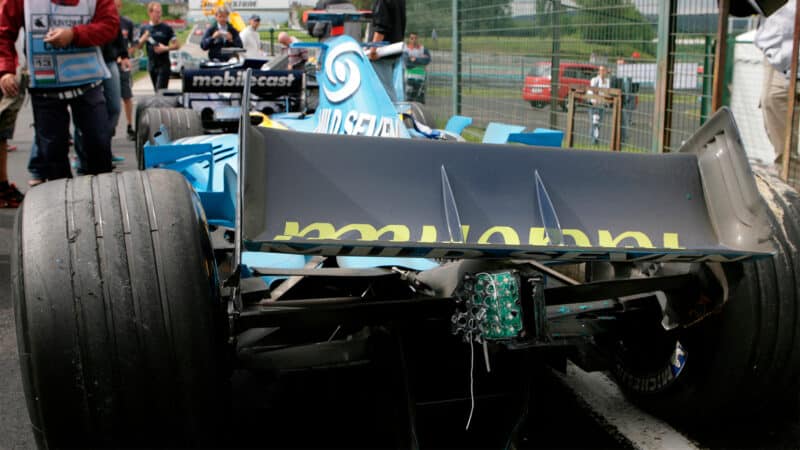
Alonso’s smashed Renault sits stationary as Button eases to victory
Grand Prix Photo
In the surviving McLaren, de la Rosa had also plumped for dry rubber and was soon setting fastest laps. Button responded on lap 54, a quick Honda stop maintaining his advantage. Schumacher, meanwhile, gambled on keeping his intermediate rubber while others pitted, a decision that moved him up to second but soon made him easy prey. While Button stroked to the flag, the Ferrari driver became involved in an increasingly wild series of incidents as others queued up to pass. It took de la Rosa several attempts – and a few banged wheels – to get through… and at one stage Schumacher stayed ahead simply by short-cutting the chicane.
